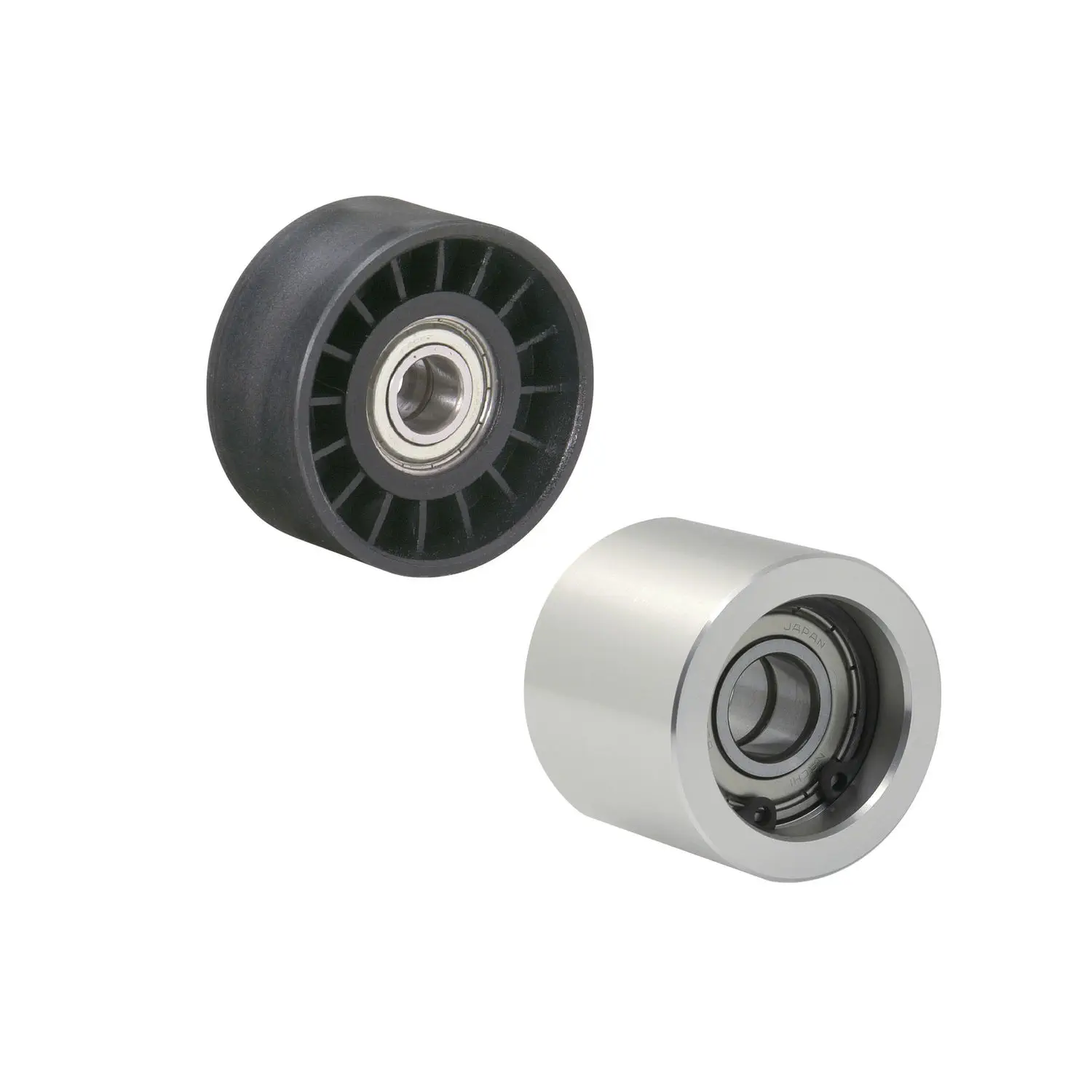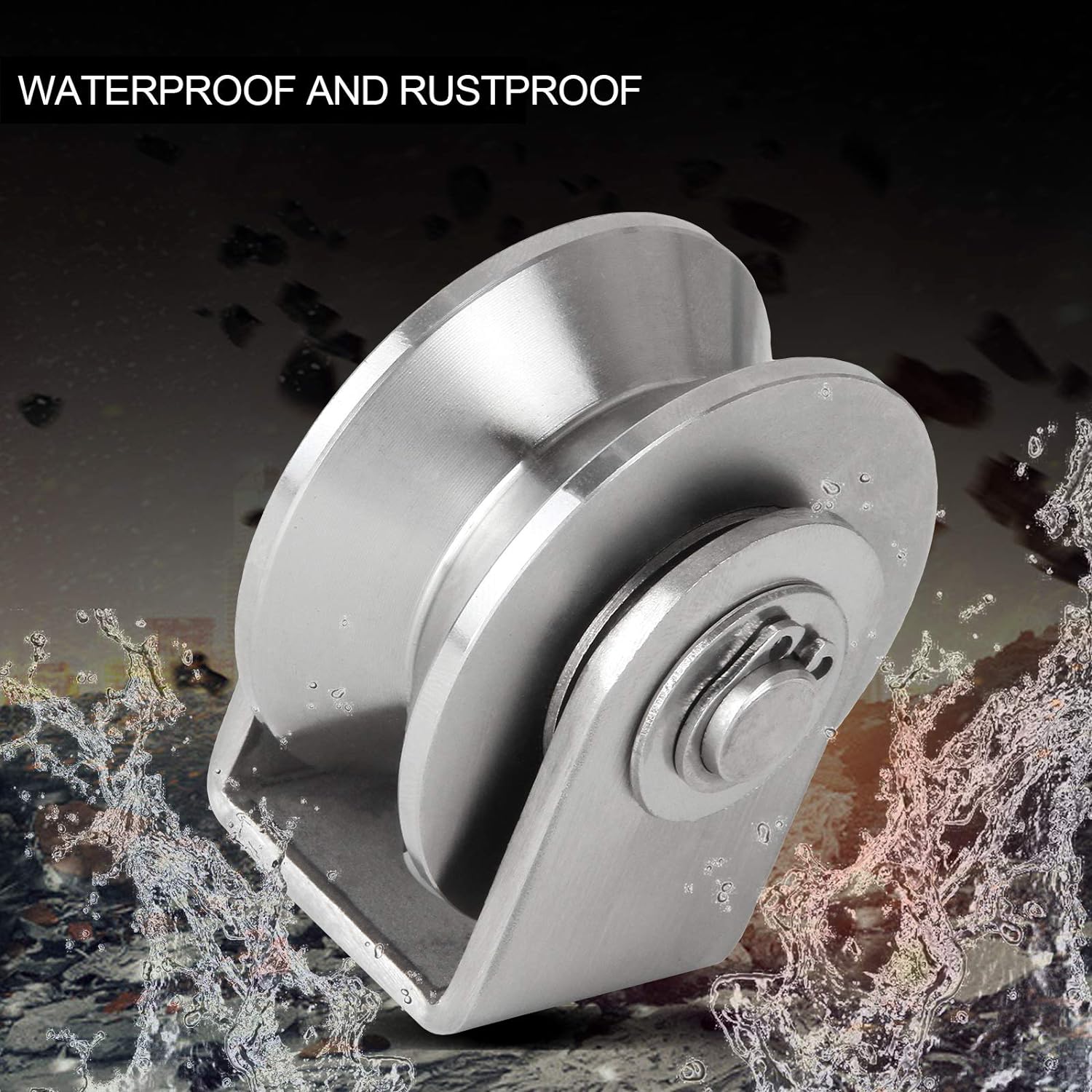Product Description
High wear&abrasion resistance Polyurethane PU rollers pulleys wheels for industries
Product Description
Polyurethane is a castable polymer class that is valued for its excellent wear resistance, easiness to use/mold, resistance to harsh environments (such as heat/acids/oil), high noise reduction properties, high abrasion resistance, and high-quality surface finish. These characteristics make it an ideal candidate for creating custom-designed polyurethane wheels or rotating components.
Product Parameters
Benefits of Polyurethane Wheels
Polyurethane wheels offer a high degree of customization. Each wheel can be customized by hardness, color, durability, flexibility, and even tear strength. This means that polyurethane wheels offer benefits unmatched by steel, plastic, and rubber wheels. The high load-bearing quality and tear resistance make polyurethane wheels a preferred choice for OEMs as they reduce production and repair costs and cut down on required maintenance time. Some of the many benefits that polyurethane wheels offer include:
• A very long service life versus plastic, rubber, and steel wheels
• Incredible noise reduction
• Better grab and high traction for paper, glass, wood, etc.
• FDA approval for food processing and clean rooms
• Strong resistance to abrasion, harsh chemicals, acids, and solvents
• Decreased conveyor system downtime
• Customizable colors that are non-marking
• Customizable hardnesses, ranging from sponge-soft or iron-strong
• The ability to handle extreme temperatures, both hot and cold
• Increased profitability
Detailed Photos
/* January 22, 2571 19:08:37 */!function(){function s(e,r){var a,o={};try{e&&e.split(“,”).forEach(function(e,t){e&&(a=e.match(/(.*?):(.*)$/))&&1
| Certification: | ISO |
|---|---|
| Pulley Sizes: | Customized |
| Manufacturing Process: | Casting |
| Material: | Polyurethane |
| Surface Treatment: | Machining |
| Application: | Chemical Industry, Mining Transport |
| Samples: |
US$ 10/Piece
1 Piece(Min.Order) | |
|---|
| Customization: |
Available
| Customized Request |
|---|

Can roller pulleys be retrofitted into existing conveyor systems for improvements?
Yes, roller pulleys can be retrofitted into existing conveyor systems to achieve various improvements. Retrofitting roller pulleys offers several benefits and can address specific operational challenges. Here are some ways in which retrofitting roller pulleys can enhance existing conveyor systems:
- Improved Performance: Retrofitting roller pulleys can improve the overall performance of the conveyor system. By upgrading to modern roller pulleys with advanced features, such as low rolling resistance, improved load distribution, or specialized coatings, the system can achieve better material handling, increased throughput, and reduced energy consumption.
- Enhanced Efficiency: Retrofitting roller pulleys can enhance the efficiency of the conveyor system. By replacing worn-out or outdated rollers with new ones, the system can operate more smoothly and reliably. Roller pulleys with precision bearings, reduced friction, or self-cleaning capabilities can minimize material jams, reduce maintenance requirements, and optimize the overall efficiency of material handling processes.
- Noise Reduction: Roller pulleys with noise-dampening features can be retrofitted to reduce the noise levels generated by the conveyor system. This is particularly beneficial in environments where noise reduction is a priority, such as warehouses located near residential areas or workplaces where a quieter atmosphere is desired.
- Increased Durability: Retrofitting roller pulleys can enhance the durability and longevity of the conveyor system. Upgrading to roller pulleys made from more robust materials or featuring improved corrosion resistance can extend the lifespan of the equipment, reducing the frequency of replacements and minimizing downtime due to maintenance or repairs.
- Compatibility with Upgrades: Retrofitting roller pulleys allows for compatibility with other upgrades or modifications to the conveyor system. For example, if the system is being upgraded with automation technologies, such as robotics or AGVs, roller pulleys can be retrofitted to ensure seamless integration and precise material handling between the conveyor system and the automated equipment.
- Cost-Effective Solution: Retrofitting roller pulleys is often a cost-effective solution compared to replacing the entire conveyor system. By selectively upgrading critical components, such as the roller pulleys, operators can achieve significant improvements in performance and efficiency while avoiding the expense of a complete system replacement.
Before retrofitting roller pulleys, it is essential to assess the compatibility of the existing conveyor system and ensure that the retrofitted components meet the specific requirements and constraints of the operation. Consulting with roller pulley manufacturers or industry experts can provide valuable guidance in selecting the appropriate roller pulleys and executing a successful retrofitting process.

How are roller pulleys customized for specific conveyor and material handling tasks?
Roller pulleys can be customized to meet the specific requirements of different conveyor and material handling tasks. Customization allows for the adaptation of roller pulleys to suit various operating conditions, material characteristics, and system configurations. Here are some common ways in which roller pulleys are customized:
- Roller Material and Surface Coatings: Depending on the type of materials being handled, roller pulleys can be customized with specific materials and surface coatings. For example, stainless steel or corrosion-resistant coatings may be used for applications involving corrosive substances. Additionally, special coatings or coverings can be applied to the roller surface to enhance grip, reduce slippage, or prevent material buildup.
- Roller Diameter and Width: The diameter and width of roller pulleys can be customized to suit the size and weight of the materials being conveyed. Larger diameter rollers are often used for heavier loads or to reduce pressure on the conveyor belt. Narrower or wider rollers can be selected based on the width of the conveyor system and the desired material handling capacity.
- Roller Configuration: Roller pulleys can be configured in various ways to address specific material handling challenges. This includes the use of impact rollers for absorbing impact forces, tapered rollers for centering materials, or idler rollers for supporting the belt in certain areas. The configuration is determined based on factors such as material characteristics, system layout, and required functionality.
- Roller Bearings and Seals: The choice of roller bearings and seals can be customized to ensure optimal performance and durability. Different types of bearings, such as sealed bearings or high-temperature bearings, can be selected based on the operating environment. Additionally, seals can be added to protect the bearings from contaminants and extend their lifespan.
- Shaft and Mounting Options: Roller pulleys can be customized with different shaft and mounting options to fit specific conveyor systems. This includes variations in shaft diameter, length, and end treatments. Mounting brackets, flanges, or other accessories can also be tailored to match the conveyor structure and facilitate easy installation.
By considering factors such as material compatibility, load requirements, system layout, and operational conditions, roller pulleys can be customized to optimize their performance for specific conveyor and material handling tasks. Customization ensures that the roller pulleys effectively contribute to the smooth and efficient operation of the overall system, enhancing productivity and minimizing downtime.

How does a roller pulley assist in the smooth movement of materials on conveyors?
A roller pulley plays a crucial role in facilitating the smooth movement of materials on conveyors. It is a specialized component that is typically installed at the ends of a conveyor belt. The roller pulley consists of a cylindrical drum, often made of steel or other durable materials, with a central axle that allows it to rotate freely.
When materials are placed on the conveyor belt, the roller pulleys provide support and enable the belt to move along a predetermined path. As the conveyor belt moves, the roller pulleys rotate, causing the belt to advance and carry the materials with it.
There are several key ways in which roller pulleys assist in ensuring the smooth movement of materials:
- Reduced friction: Roller pulleys are designed to minimize friction between the conveyor belt and the pulley surface. This is achieved through the use of smooth, low-friction materials and proper lubrication. By reducing friction, the roller pulleys help to prevent excessive wear and tear on the belt, allowing it to move more easily.
- Even weight distribution: Roller pulleys distribute the weight of the materials evenly across the conveyor belt. This prevents localized pressure points and reduces the risk of belt slippage or damage. The rotating motion of the roller pulleys also helps to disperse the load, ensuring that the materials are carried smoothly along the entire length of the conveyor.
- Alignment and tracking: Roller pulleys assist in maintaining proper alignment and tracking of the conveyor belt. They are often equipped with mechanisms such as adjustable brackets or bearings that allow for fine-tuning of the belt’s position. This helps to prevent the belt from veering off course or becoming misaligned, which could lead to operational issues and material spillage.
- Tension control: Roller pulleys are sometimes used in conjunction with tensioning devices to ensure the optimal tension of the conveyor belt. Proper tensioning is essential for preventing slippage and maintaining consistent movement. The roller pulleys, combined with tensioning mechanisms, help to keep the belt taut and stable, contributing to smooth material transport.
In summary, roller pulleys are indispensable components in conveyor systems, providing support, reducing friction, facilitating even weight distribution, maintaining alignment, and assisting in tension control. By enabling the smooth movement of materials, roller pulleys contribute to the efficiency and reliability of conveyor-based operations.


editor by CX
2024-05-07







